Article 99: The art of crafting coffee tools and utensils
During the process, coffee has accompanied the development of various aspects of social life. The tools and techniques for brewing, as well as the enjoyment of coffee, have been continuously innovated, becoming cultural symbols of nations and empires, contributing to the formation of exemplary coffee cultures worldwide.
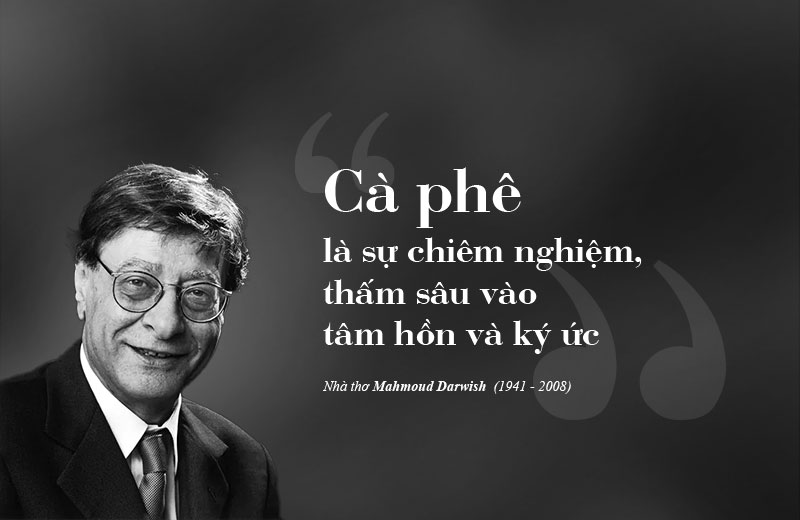
Coffee is a meditation and a plunge into memories and the soul. Poet Mahmoud Darwish (1941-2008)
The mark of spiritual reverence
From its origins in Ethiopia to its global spread during the 16th century with the advent of Islamic influence, coffee has been regarded as a gift from the Divine, a sacred beverage that brings alertness, stimulates creativity, and strengthens faith. During that time, the brewing and enjoyment of coffee became one of the central rituals in Ethiopian society and the Muslim world. Particularly, when it was introduced to the Ottoman Empire, coffee rituals, with their newly invented brewing techniques by the Turks, became a unique coffee culture that remains prevalent to this day.
In “Coffee – From the soil to the cup,” Cenk Girginol describes the coffee ceremony of Muslims as “a cultural foundation, for it has never existed solely as a beverage.” Initially, coffee was only allowed to be consumed in monasteries and churches during religious practices. The coffee ceremonies were performed to express reverence to the Divine, to seek blessings, and to feel closer to the heavenly realm. As it entered secular life, the coffee rituals became a means of social communication and were seen as symbols of hospitality, refinement, and goodwill. Coffee held an important position in social and cultural life, serving as a catalyst for dialogue, resolution of disputes, and an expression of love and aspirations for the future.
Therefore, every element of a coffee ceremony, from the coffee beans, utensils, brewing methods, to the act of enjoyment, is carefully selected, meticulously prepared, and carried out with solemnity. Especially, the brewing and enjoyment tools and utensils are given special attention in their craftsmanship, as they not only serve as instruments but also reflect the traditional cultural identity of the community, the sacredness and sincerity in the ritual, as well as the host’s status.
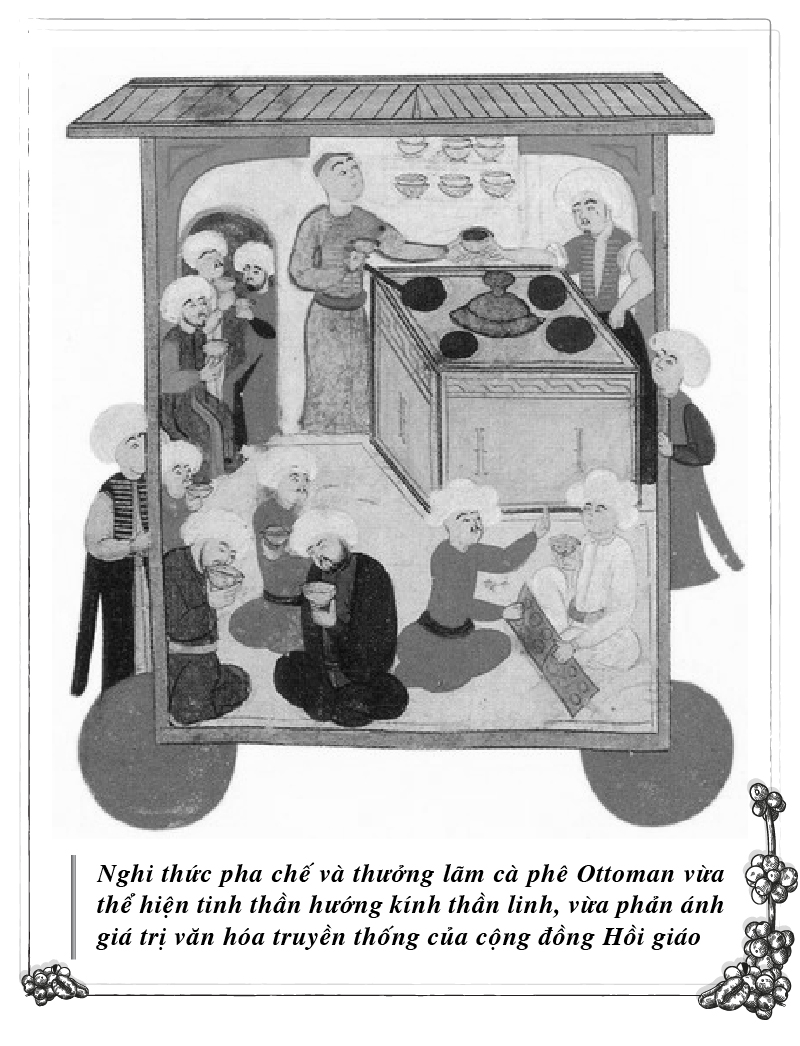
The Ottoman coffee brewing and enjoyment rituals both embody a spirit of reverential devotion and reflect the traditional cultural values of the Muslim community.
During the Ottoman period, the coffee ceremony involved roasting fresh coffee beans in a pan, grinding them finely with a mortar and pestle, boiling them with pure cold water in a cezve pot on hot sand, and serving the beverage in small cups called fincans placed in zarf holders on a decorated tray. The tools and utensils used in the coffee ceremony were crafted intricately with traditional materials, designs, and patterns, reflecting the cultural and spiritual values of the Muslim way of life.
Copper, a metal widely available in the Ottoman Empire, known for its good heat conductivity and durability, was extensively used to craft kitchen tools and weapons during that time. Moreover, copper was believed to possess purifying properties and attract positive energy and blessings in cultural life, making it suitable for creating ceremonial objects. Therefore, most of the common tools and utensils used in the Ottoman coffee ceremony, such as the roasting pan, handheld grinder, coffee container, cezve pot, warming pot, tray, and zarf holders, were made of copper or brass, with a few made from other precious materials like gold, silver, porcelain, or fragrant wood. The decorative patterns were closely associated with Ottoman cultural symbols and were intricately created using traditional engraving techniques, precious stones, diamonds, gold thread embroidery, and silver thread embroidery.
In particular, the use of a sand-filled heating stove for coffee brewing is a distinctive feature of Ottoman coffee culture. Functionally, the sand provides suitable heat distribution, ensuring even cooking and preserving the delicate flavor of the coffee. Furthermore, in the Islamic world, sand is also used for dry purification rituals, helping to cleanse oneself before prayer and expressing sincere reverence towards the divine.
The intricate craftsmanship of the coffee tools and utensils, resembling artistic masterpieces, not only demonstrates the Ottoman people’s reverence for the divine but also expresses pride in their cultural heritage. Additionally, in Ottoman society’s daily life, coffee symbolizes hospitality and friendship. Brewing and serving coffee in exquisite and luxurious tools and utensils are ways for Ottomans to honor the esteemed status of the coffee drinker and assert their position in society.
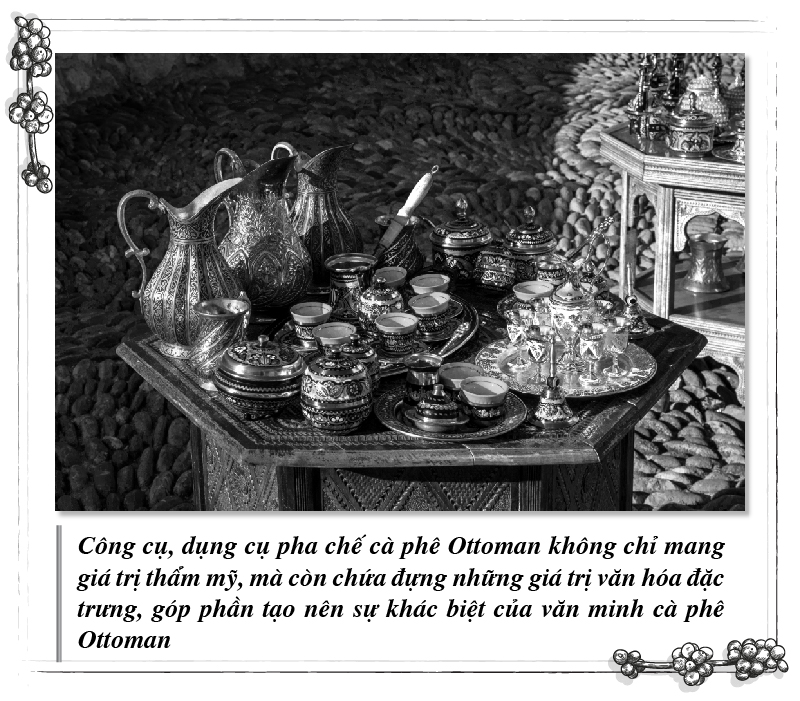
The coffee brewing tools and utensils of the Ottoman Empire possess not only aesthetic value but also encapsulate distinctive cultural values, contributing to the uniqueness of Ottoman coffee culture.
As soon as coffee became an important export commodity of the Ottoman Empire, Ottoman coffee culture spread throughout the entire region of Asia, Europe, and Africa, fueling the demand for coffee brewing, and serving tools such as cezve pots, coffee cups, coffee trays, and more. Consequently, the Ottoman handicraft industry experienced significant growth, producing valuable tools and utensils for coffee with high economic and artistic value, contributing to shaping the distinct character of Ottoman coffee culture worldwide.
The cultural symbol of an elevated lifestyle
In the 17th century, coffee and coffee houses were introduced to Europe, becoming a source of awakened energy, creativity, and catalyst for the flourishing Enlightenment era, laying the foundation for Europe’s remarkable progress in the following period. In the 19th century, European society underwent significant cultural and social changes due to the impact of the Industrial Revolution. This was also a time when the global demand for coffee appreciation increased. Coffee and coffee houses became gathering places for scientists and intellectuals to research, disseminate new ideas and innovations in various fields, shaping modern Western civilization.
Particularly, at the end of the 19th century, the steam industry boomed. Countries from East to West applied scientific and technological advancements to shape their distinct coffee appreciation styles, introducing inventions that brought new value systems and lifestyles. For example, the United States created instant coffee (in 1901), Germany invented the coffee filter and the Pour-Over Coffee method (in 1908), and France produced the French Press coffee maker (in 1929).
In the spirit of intellectual optimism, creativity, and the pursuit of discovering and creating new lifestyles for Europeans, along with their love for coffee and recognition of the values that coffee contributes to the progress of humanity, Italians invented and reformed coffee brewing tools, creating a new wave of coffee culture appreciation in Europe. In 1884, Italian entrepreneur Angelo Moriondo (1851-1914) was granted a patent for the “Economical and Instantaneous Steam Coffee Maker.” This is considered the first espresso coffee machine that uses steam to extract the pure essence and aroma of coffee beans in the fastest time possible. From this characteristic, the term “Espresso” was born and spread throughout Europe.
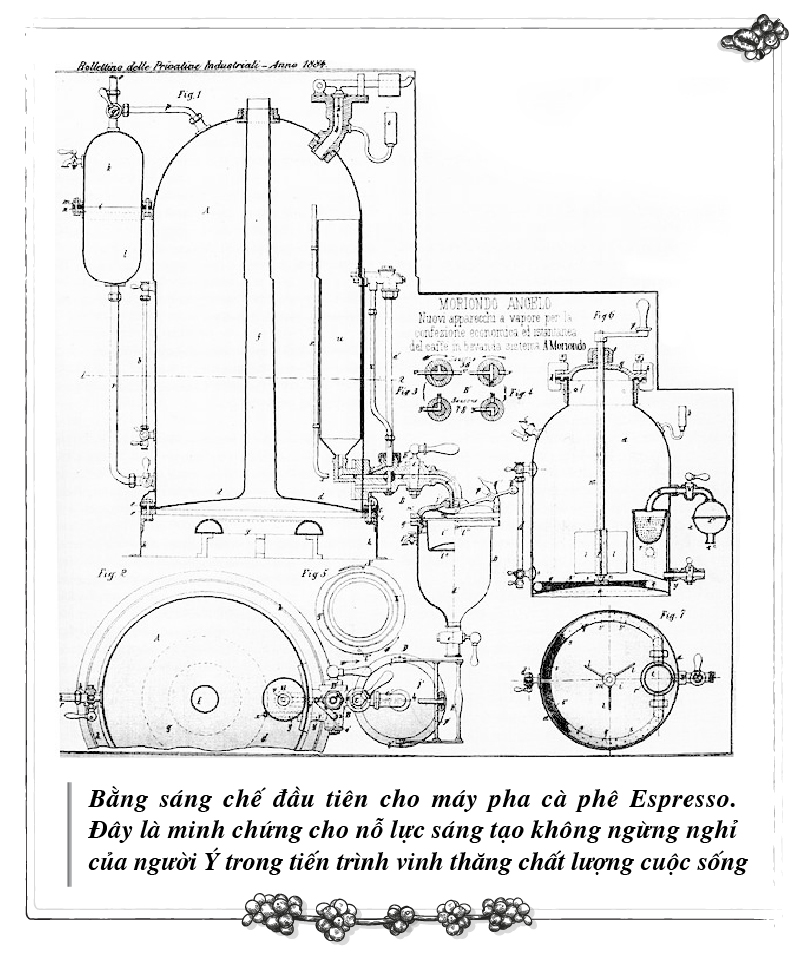
This first patent for the espresso coffee machine is a testament to the relentless creative efforts of Italians in the pursuit of improving the quality of life.
Not stopping there, at the Milan Fair in 1906, Luigi Bezzera and Desiderio Pavoni introduced the Ideale machine. This was an improved version based on Moriondo’s design, with several innovations, such as addressing the difficulty of controlling pressure when directly heating with fire and creating steam pipes to release condensed water under the boiler. In 1938, Giovanni Achille Gaggia (1895-1961) combined the operating principle of a piston to create the first pressure-driven Espresso coffee machine, laying the foundation for the modern Espresso era.
In the 20th century, with the strong development of technology and science, manufacturing machinery and brewing equipment became increasingly diverse. Once again, with the desire to establish a distinctive identity and contribute to human civilization, Italians invented the Moka Pot. From there, coffee appreciation culture continued to create a new “revolution,” allowing many people to enjoy espresso at home and promoting gender equality as women gained easy access to coffee. The Moka Pot was also honored as a symbol of the industry when it utilized aluminum to create the pot’s body. Prior to the Moka Pot, there were no kitchen utensils made of aluminum. Soon after the Moka Pot’s introduction, aluminum became a familiar material in the kitchen, and the 1930s marked the golden age of aluminum kitchen products.
Through pioneering efforts to innovate brewing tools, Espresso and the Moka Pot became symbols of a new lifestyle, providing a sense of human transcendence. They represent human mastery in life, mastery over the laws of nature, and affirm the position of humans in building the world. At the same time, the Italian coffee appreciation style opened a new coffee culture – the Roman coffee culture, closely associated with technological and scientific elements.
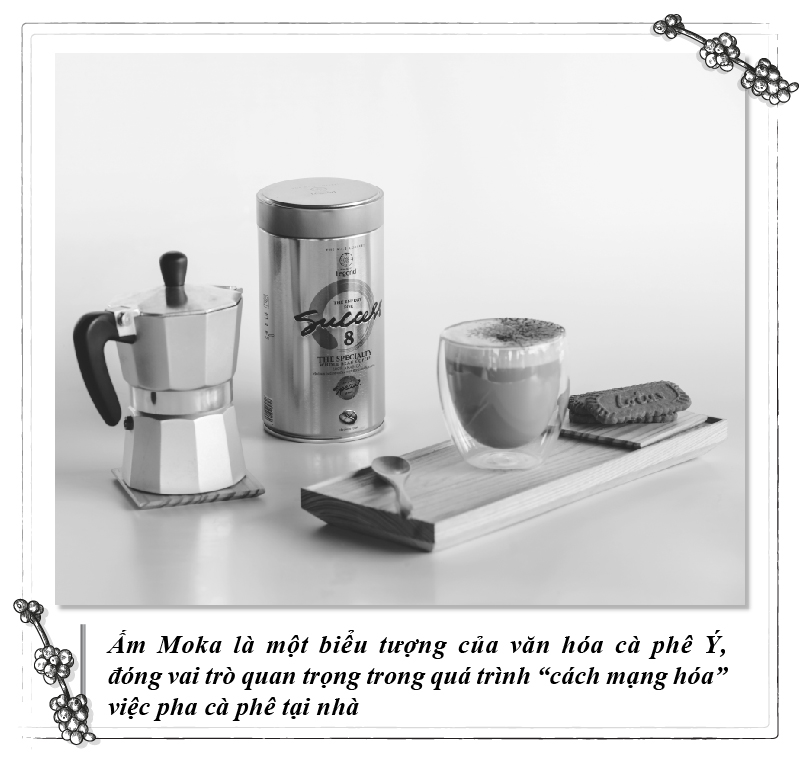
The Moka Pot is an icon of Italian coffee culture, playing a crucial role in the “revolutionizing” of home coffee brewing.
With a love for coffee and in-depth research on its history, origins, and culture, Trung Nguyen Legend Group recognizes that coffee has originated and developed as a cyclical journey from East to West and now seeks to return to its Eastern roots, searching for Eastern civilization. Founded in Buon Ma Thuot, the homeland of the world’s finest Robusta coffee beans, Trung Nguyen Legend aspires to elevate coffee into art, culture, and a philosophy of life and ethics. To this day, Trung Nguyen Legend has been striving to build the Thien (Meditation) Coffee civilization, rooted in Vietnamese culture and contributing to the global coffee culture.
Derived from the essence of Ottoman-Roman coffee cultures and inspired by the philosophies of the East, Thien Coffee carries the awakening properties of coffee and embodies the philosophy of introspection, like a guiding light leading people towards the values of Truth, Goodness, and Beauty. It constantly strives for learning, self-discipline, and the pursuit of truth and enlightenment through love, kindness, and service, ultimately attaining true wealth and happiness.
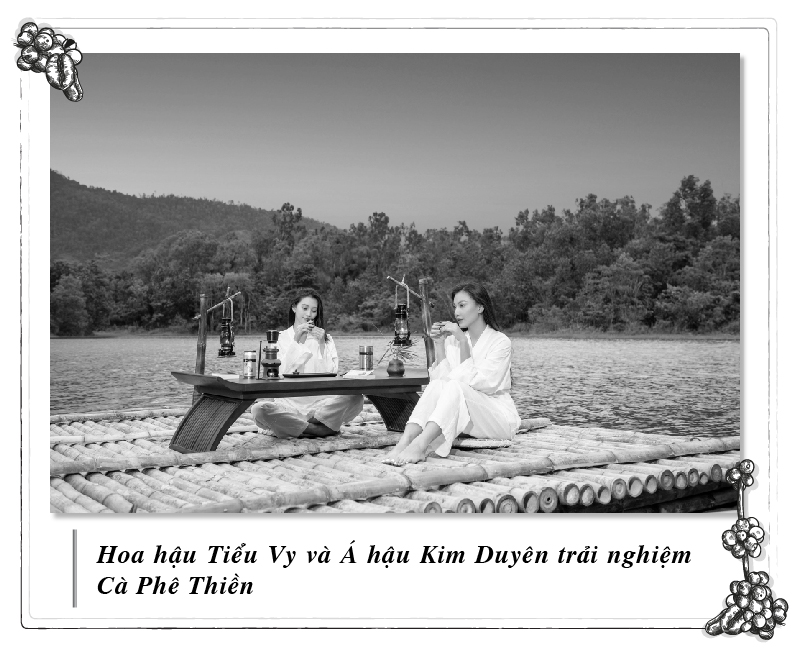
Beauty Queen Miss Tiểu Vy and First Runner-up Kim Duyên experience Thien (Meditation) Coffee
With that spirit, Trung Nguyen Legend has been gradually perfecting the Coffee Zen ecosystem, from philosophy to products, services, and exquisite tools for enjoyment. Among them, the tools for enjoying Thien Coffee are researched and creatively crafted by Trung Nguyen Legend using familiar natural materials such as ceramics, porcelain, silk, rattan, bamboo, and more from traditional craft villages. They are adorned with decorative motifs that carry cultural symbols such as bronze drums and bamboo bodies, embodying the spirit of the land, water, and craftsmanship. By combining excellent energy coffee products made from the world’s finest Buon Ma Thuot Robusta beans with specially designed brewing tools and exquisite enjoyment, Trung Nguyen Legend has created the Thien Coffee product line that embodies the five spirits of the modern era: Aspiration – Power – Breakthrough – Prosperity – Mindfulness. It awakens and nurtures the inner strength of each individual.
Readers are cordially invited to watch the series of The Tao of Coffee videos posted on https://bit.ly/caphetrietdao
Coming up: Coffee and human ethical thoughts.


